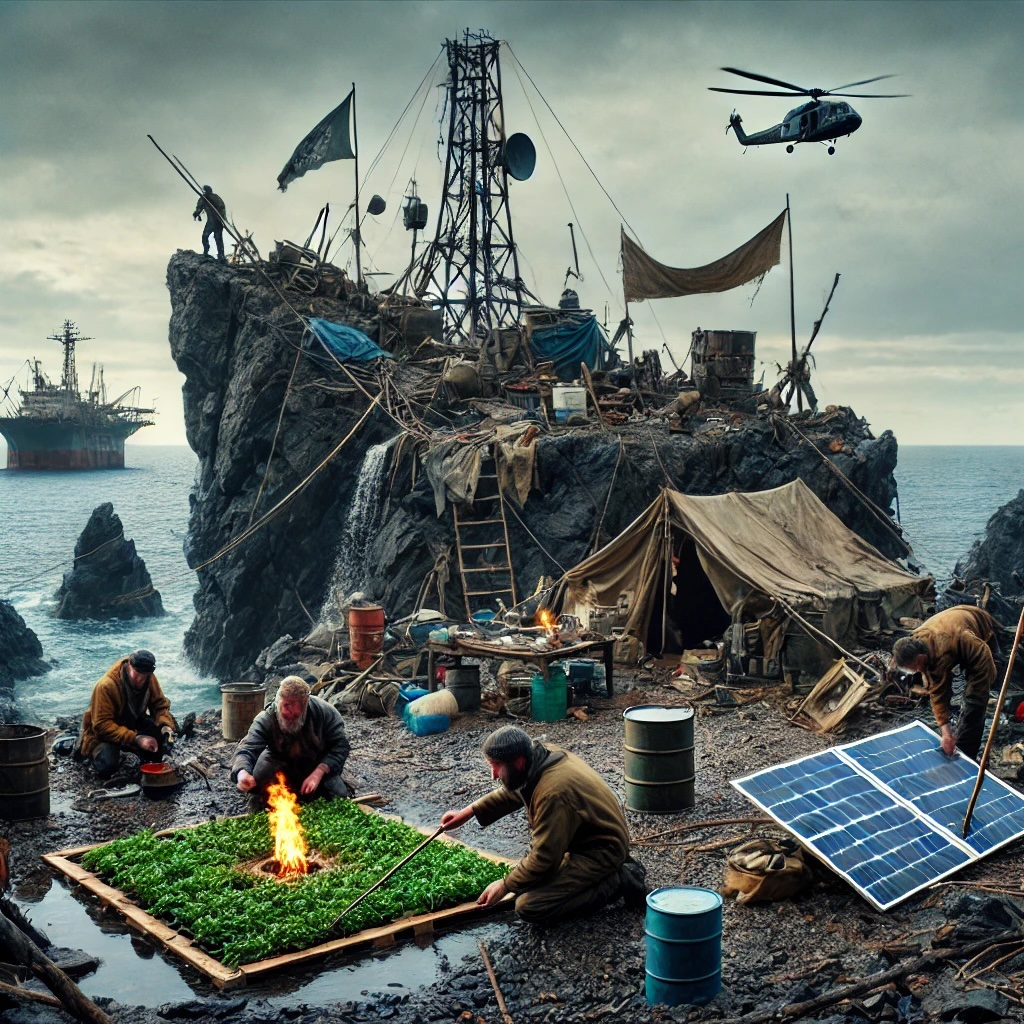Surviving the Unthinkable: The Ingenious Journey of Oilrig Castaways
It began like any ordinary day—waves lapping against the steel hull of the offshore oilrig, the steady hum of machinery, and a crew of seasoned experts going about their work. But when disaster struck, it turned their lives upside down in an instant. A sudden and catastrophic accident sent the oilrig spiraling into chaos, leaving the crew stranded in the most unlikely of places: a small, desolate island in the middle of the ocean.
With limited supplies and no immediate hope of rescue, the crew faced a harsh reality. They had to rely on their ingenuity, training, and camaraderie to survive. This is their story—a tale of resourcefulness and resilience.
Day One: Assessing the Damage
The first hours were frantic. After the initial shock, the crew of engineers, technicians, and specialists quickly transitioned into survival mode. They gathered whatever they could salvage from the wreckage: tarps, ropes, tools, emergency rations, and even scrap metal. What they had was minimal—just enough to get by for a few days. But they knew that rescue could be weeks, even months, away.
The island offered no luxuries: jagged rocks, sparse vegetation, and a few freshwater springs. There were no signs of human life, no natural shelters. This was survival at its rawest.
Day Two: Turning Scrap into Shelter
As oilrig workers, the crew was no stranger to harsh conditions. With their engineering expertise, they transformed the limited materials they had into functional shelter. Using scrap metal from the wreckage, they fashioned windbreaks and makeshift roofs. Tarps were suspended between rocks to create crude tents, and ropes became invaluable in securing everything against the island’s unpredictable weather.
One of the crew members, a welder, ingeniously crafted rudimentary tools from leftover steel—axes, hammers, and hooks. These would prove essential in gathering firewood and foraging for food.
Day Five: Fire and Water—The Essentials
While the shelter provided temporary relief, fire and water became their top priorities. Thankfully, they had managed to save a small supply of flares and waterproof matches. But once those ran out, the crew had to think outside the box.
One crew member—a survivalist at heart—demonstrated the bow drill method to create fire using sticks and friction. It wasn’t easy, but after a few failed attempts, a spark ignited a small blaze. That fire became their lifeline, providing warmth, the ability to cook, and a signal to potential rescuers.
Water filtration was another hurdle. They found a freshwater spring on the island, but it wasn’t enough to sustain the entire crew for an extended period. Using scrap plastic and metal sheets, they built a solar still—a device that condensed seawater into drinkable fresh water. It was a slow process, but it saved their lives.
Week Two: Foraging, Fishing, and Teamwork
By the second week, food supplies were running low. The emergency rations had been rationed carefully, but hunger was gnawing at them. The crew had to get creative. They used salvaged fishing line and hooks from their toolkits to catch fish in the surrounding waters. A mechanical engineer fashioned spears from scrap wood and metal, which proved useful for hunting small game on the island.
A marine biologist on the crew proved to be a valuable asset. She identified which plants were safe to eat and even helped cultivate a small patch of edible greenery using soil they collected from the island’s rocky surface. With time and patience, they began to grow small crops, supplementing their diet with seaweed and the occasional fish.
The crew also discovered a small cove where they could collect crustaceans, which became a source of protein. Their diet was basic but enough to keep them alive and relatively healthy. Teamwork was key, and every crew member contributed their skills—be it fishing, hunting, foraging, or constructing additional shelters.
Week Four: Keeping the Spirit Alive
Survival wasn’t just about physical needs—it was about keeping morale high. The crew knew that isolation could be just as deadly as hunger or dehydration. To combat the creeping sense of despair, they devised ways to stay occupied. One crew member, an electrician, rigged up a basic communication system using old radios, hoping to send distress signals.
The captain initiated daily group meetings, where everyone shared updates, discussed plans, and even told stories to lighten the mood. These moments of unity helped foster a sense of purpose and camaraderie, reminding the crew that they weren’t just surviving—they were living, and there was hope on the horizon.

Week Eight: The Rescue
After nearly two months of survival, their persistence paid off. One morning, a rescue helicopter appeared on the horizon, drawn to the island by the crew’s makeshift signal fires and the faint distress signals they had managed to send using their salvaged equipment. The sight of the helicopter brought cheers and tears—it was the moment they had all been waiting for.
As they boarded the chopper, exhausted but alive, they looked back at the island that had been their unlikely home. They had conquered the harshest elements, relying not just on their tools and knowledge but on each other.
Conclusion: The Triumph of Human Ingenuity
The story of the oilrig castaways is a testament to the power of human ingenuity and resilience. In the face of overwhelming adversity, they transformed their dire situation into one of hope, survival, and triumph. Using their unique skill sets, they turned an uninhabitable island into a livable environment, surviving long enough to await rescue. This tale serves as a reminder that no matter how desolate the circumstances, creativity, expertise, and teamwork can overcome even the most challenging odds.
The adventure may have ended, but the legacy of their survival lives on—a story of determination, resourcefulness, and the unbreakable human spirit.